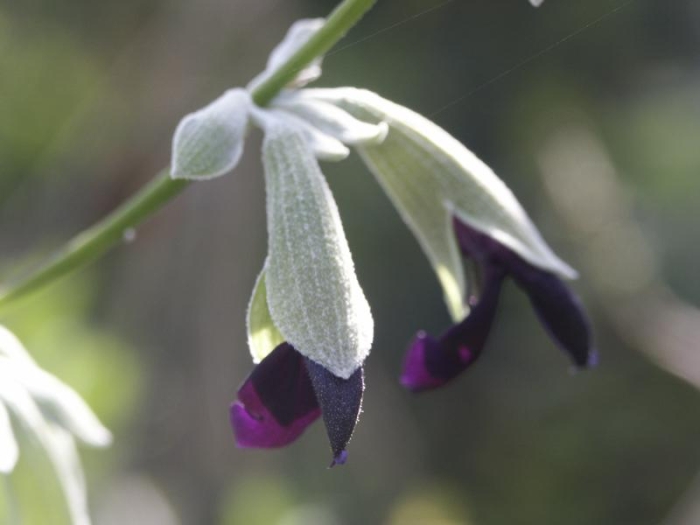Andean Silver-Leaf Sage
(Salvia discolor)
Andean Silver-Leaf Sage (Salvia discolor)
/
/

Scott Zona
CC BY 2.0
Image By:
Scott Zona
Recorded By:
Copyright:
CC BY 2.0
Copyright Notice:
Photo by: Scott Zona | License Type: CC BY 2.0 | License URL: https://creativecommons.org/licenses/by/2.0 | Uploader: Flickr upload bot | Publisher: Wikimedia Commons | Title: Salvia_discolor_(Scott_Zona)_001.jpg | Notes: Author: Noah Elhardt |














Estimated Native Range
Summary
Salvia discolor, commonly known as Andean Silver-Leaf Sage or Peruvian Sage, is a perennial herb that is semi-deciduous in cooler climates and evergreen in its native habitat of Peru, particularly thriving in the Andean region. It typically grows to a height and width of approximately 3 feet (0.9 meters). Salvia discolor is characterized by its striking dark purple to nearly black flowers, which are accentuated by contrasting white or light-colored calyces, and bloom intermittently during warm spells from summer through autumn. The foliage is notable for its silvery-green leaves that provide a beautiful backdrop to the unusual flower color. The plant’s overall appearance is compact and bushy, making it an attractive addition to garden borders and containers.
Andean Silver-Leaf Sage is valued for its unique flower color, aromatic foliage, and relatively low maintenance requirements. It is often used in ornamental gardens, particularly in Mediterranean climates similar to its native Andean habitat. It is also suitable for xeriscaping due to its drought tolerance once established. In cultivation, it requires full sun to partial shade, well-draining soil, and moderate watering, with reduced water during winter to prevent root rot. While it is not commonly found in cultivation, its rarity adds to its appeal for plant collectors and enthusiasts.CC BY-SA 4.0
Andean Silver-Leaf Sage is valued for its unique flower color, aromatic foliage, and relatively low maintenance requirements. It is often used in ornamental gardens, particularly in Mediterranean climates similar to its native Andean habitat. It is also suitable for xeriscaping due to its drought tolerance once established. In cultivation, it requires full sun to partial shade, well-draining soil, and moderate watering, with reduced water during winter to prevent root rot. While it is not commonly found in cultivation, its rarity adds to its appeal for plant collectors and enthusiasts.CC BY-SA 4.0
Plant Description
- Plant Type: Shrub
- Height: 1.5-2 feet
- Width: 0.75-1 feet
- Growth Rate: Moderate
- Flower Color: Blue, Black, Purple
- Flowering Season: Summer, Fall
- Leaf Retention: Deciduous
Growth Requirements
- Sun: Full Sun
- Water: Low, Medium
- Drainage: Medium
Common Uses
Bee Garden, Bird Garden, Border Plant, Butterfly Garden, Deer Resistant, Drought Tolerant, Fragrant, Hummingbird Garden, Low Maintenance, Potted Plant, Rabbit Resistant, Rock Garden, Salt Tolerant
Natural Habitat
Native to the Andean region of Peru
Other Names
Common Names: Concolor Sage, Andean Silver Leaf Sage
Scientific Names: , Salvia discolor, Salvia bonplandiana, Salvia nigricans,
GBIF Accepted Name: Salvia discolor Kunth